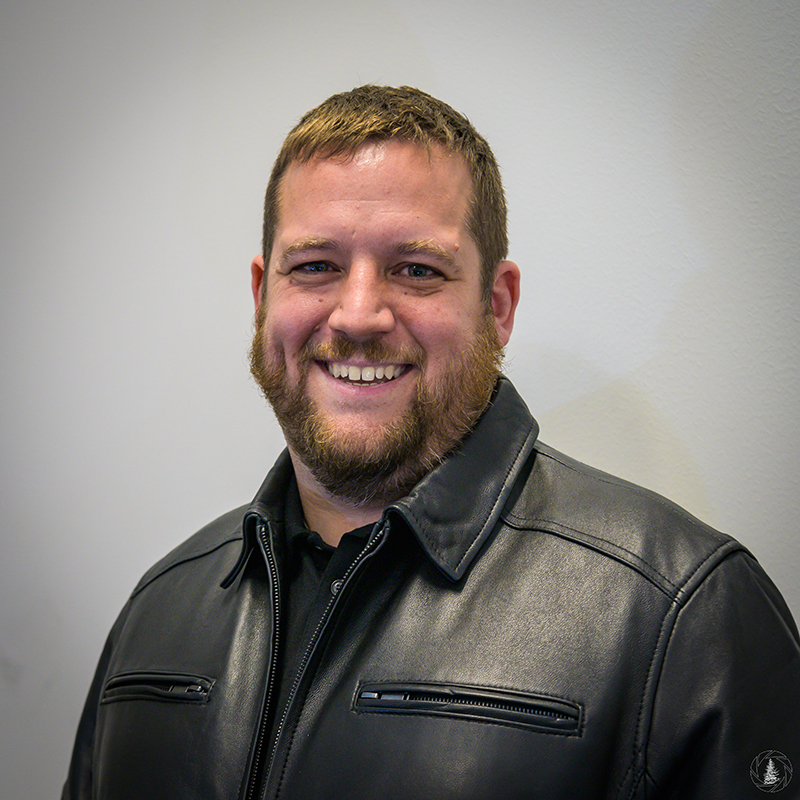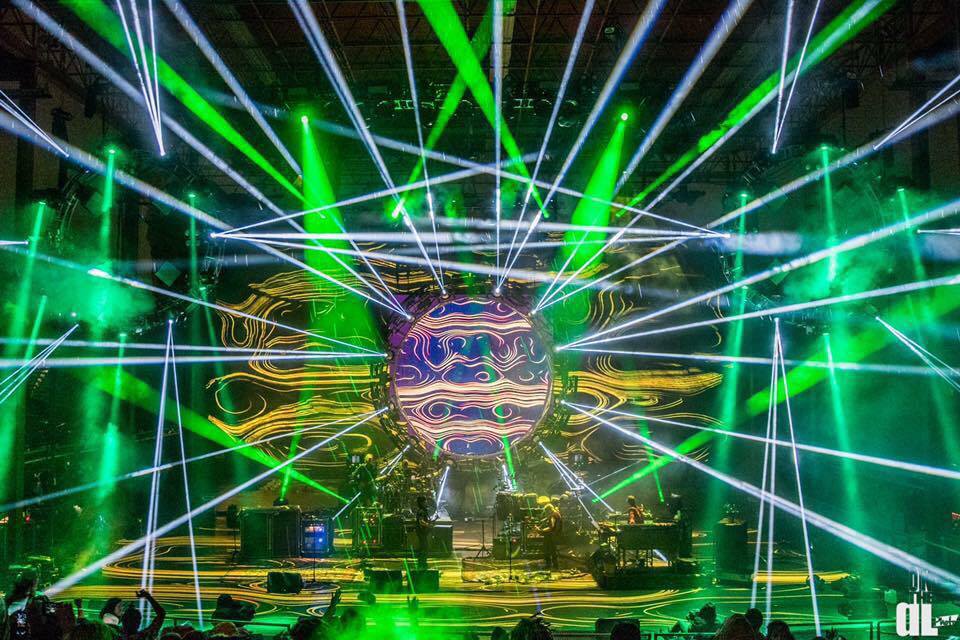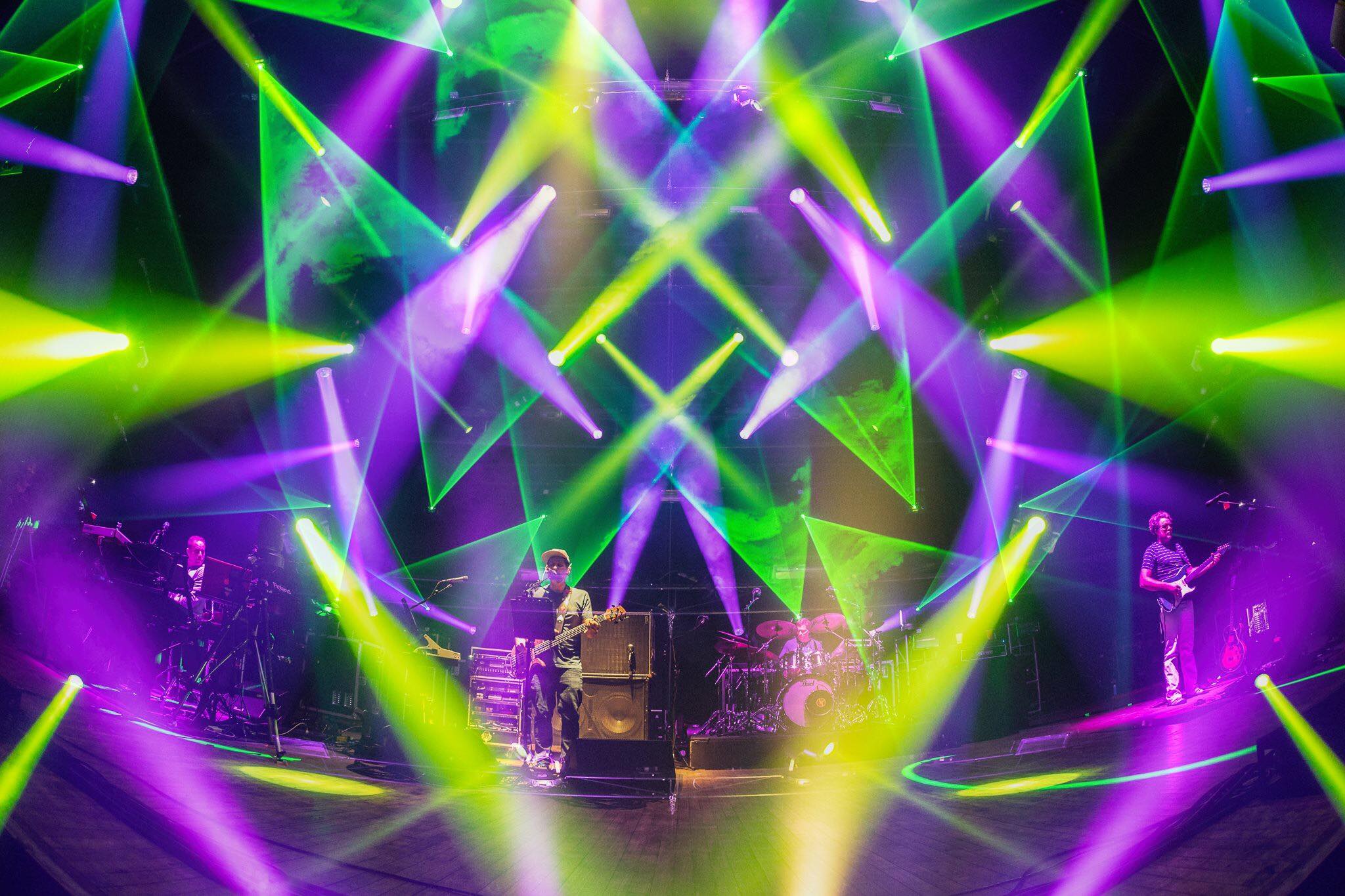Andrew Cass – Expansive Light
Posted on July 2, 2024
Photo: Shutter Finger
As a student of jamband lighting, as well as one of its most proficient practitioners, this Denver-based designer has created stunning and deeply evocative aerial effects for clients like The String Cheese Incident and The Disco Biscuits. Putting intricately woven patterns of light in the air, is, he believes, a medium for visually interpreting the improvisational music of those artists.
This vision, along with some impressive busking skills (he has roughly 2,000 busking sequences in his base file), have made Andrew Cass a much in demand jam band designer. But like the beams he sends in the air, Cass’s vision refuses to be bound. For him, being involved in a creative endeavor means constantly expanding one’s horizons. It’s is all part of what he calls “the artistic side of this process.”
 So, although he still creates memorable aerial looks, Cass has also ventured into a wide range of designs that reflect the unique sound and spirit of different artists, a diverse group that includes Slightly Stoopid, Wu Tang Clan, Emancipator, Bassnectar and others. Recently, he’s also been working on broadcast projects, such as The NBA on TNT.
So, although he still creates memorable aerial looks, Cass has also ventured into a wide range of designs that reflect the unique sound and spirit of different artists, a diverse group that includes Slightly Stoopid, Wu Tang Clan, Emancipator, Bassnectar and others. Recently, he’s also been working on broadcast projects, such as The NBA on TNT.
Of course, through it all, he has continued to focus on his core design principles of staying within the limitations of budget and other restraints, paying meticulous attention to every detail, and always remaining true to his client’s own vision. Cass took time from his busy schedule to talk to us about the expansive power of light.
In some of your recent work for The String Cheese Incident and Disco Biscuits, you created some really impressive aerial effects directly over the stage, weaving together beams, washes and lasers to form this kind of tapestry in the air. Can you tell us how these multi-layered aerials reflect your design philosophy?
“The jamband lighting philosophy has evolved over the years but the basic departure from conventional rock n roll lighting is that a significant portion of the rig is dedicated to lighting the air over the stage, as our interpretation of the music. This was primarily influenced by the early work of Chris Kuroda from Phish, but since then what I see is three generations of LDs who have added to and interpreted this idea with their own vision. Because jam bands are so improvisational this ‘tapestry in the air’ as you put it is our medium for that improvisation visually.”

Photo: Dylan Langille
Elaborating on that point, you have designed for some prominent jambands. How does your approach lighting them differ from the way you approach lighting bands in other genres, such as Wu Tang Clan or Bassnectar?
“I have spent most of my life watching and analyzing jamband lighting designers big and small and I know many of them and have watched them grow and change with the technology and the genre. Many of these gigs are held for years so I have been uniquely lucky to be able to light a couple of different jam bands over the years and each one has a way their show has historically looked. So, I always try to respect that, and add a bit of my own vision as well. SCI was really my sole interpretation of how I thought the show should look when comparing that to shows like Wu Tang Clan or Slightly Stoopid. The difference is those clients are more likely a group collaboration of how the show is to be lit. The colors tend to follow the video and there is more attention to the cued-out show then the improvisation of jam bands. My goals in lighting a hip hop act are entirely different then a jam band and so the design and programming represents that.”
In general terms, what are the first things you look at when to begin the design process?
“Restrictions — I always want to design knowing what I CAN NOT get away with. This means knowing the stage plot so I can decide how to best light the artist. It also means knowing things like truck space, rigging restrictions, budget, and crew, so I can design something that is reasonable in real life and not just on paper.”
In some of your shows, such as Slightly Stoopid’s Closer To The Sun, and Emancipator’s set at the Cascade Equinox Festival you worked with video designers who created some elaborate, psychedelic looking screens. When you’re working a show that has this kind of intricate video element, how do you adjust your lighting?
“In both of those cases that was my friend Johnathan Singer on video, and he is incredibly talented and to answer your question the last thing I want to do is obscure the video. With that comes the understanding that there are times in the show when the lighting also takes the front seat visually, so we tend to decide in advance when those moments are, or we feel it out throughout the set.”
Your shows often have a good bit of lasers in them. Can you elaborate on how you define the role of lasers and other lights in your designs?
“It depends on the artists, but my general philosophy on lasers is to pick a few places in the show and let them be the star for those moments. You could say I like the Pink Floyd philosophy over the EDM one on this topic, but there are exceptions. I think the wow factor per dollar of laser shows has been greatly reduced over the last few years and they often don’t look good on camera, so I’m currently moving away from them, but they can be a powerful tool when used properly.”
Recently, you have been venturing into broadcast projects like the NBA on TNT. What kind of adjustment did this involve on your part?
“I really enjoyed the challenge of broadcast and it creates an entirely unique set of goals when preparing and programming. It is important you have a solid plan in place on how each subject will be lit for each shot, and to be prepared for constantly changing lighting conditions. For that event we had shots in the full sun in the afternoon, rain after that, and all the way to darkness with a concert in the background in the evening, so being able to make constant adjustments and communicate with the broadcast staff was imperative.”

Photo: Sam Silkworth
Is there an “Andrew Cass Look” that runs through your designs?
“Broadly it’s the aerials and lots of gobos but I am trying to go away from ‘my look,’ moving forward — and that is because I’d like to work with more artists that are outside my genre, and I prefer to look at each client as their own thing. I spent the first half of my career trying to have a style and now that I have one, I want to get rid of it, but I guess that’s the artistic side of this process.”
How do you explain your ideas to clients?
“I make what I call a design plot. This is a PDF document that goes through the nuances of the design. In it is a combination of renders and technical drawings, it explains things to a lay person. These can be sent to managers or artists so they can understand them without having to navigate complicated technical documents. In the past I have made websites for clients to log on to and look through potential design ideas and give feedback.”
What is the biggest challenge when you do that?
“I’ll call this the design/budget paradox. I don’t want to bid the design until we have decided on a final– but to decide on a final we need to know the costs.”
You have done quite a few festivals. What is the biggest challenge when lighting a client at a festival as opposed to on a tour?
“How can I pick just one challenge when festivals provide so many! Maybe it’s bad paperwork, or broken lights, or FOH — but I think the real answer here is cloning. This is a word from the console world, but really what we’re talking about is how are you going to take your touring show file and make it work for the festival setup? This is why good festival designers will consider the needs of touring artists or at least reach out to ask what is necessary to make their show work under these circumstances. Being good at cloning is essential to festival success if you have a large busking file or cue stacked songs.”
Do you busk often? What’s the key to busking?
“Do I ever! The basics of jam band lighting is a diverse busking show. My base file has approximately 3000 sequences and 2000 of those are for lighting busking. Over the years of programming jam bands my goal has been to combine an extensive busking show with the benefits of a cue stacked show and getting between them smoothly. I do this using an extensive naming convention that selectively turns off the busking sequences when I want to return to the cue stack. I started this system with just lighting and then added video, lighting, and camera inputs so each song can contain data regarding all of these and I can confidently busk those choices as well.”
How do you see AI influencing your work in the future?
“I’m seeing it being used very effectively in video content production but I’m not seeing it in my world yet.”
Is there any artist from the past who is no longer with us that you wish were still around for you to light?
“Tough question. Jerry Garcia is probably the answer. But I do think classical music could use some better lighting so how about Vivaldi with a big light show!”
How did you get started as a lighting designer?
“I was a music industry major in college just in time for a company called Napster to come out and ‘forcibly restructure’ the industry that I was learning to be a part of, so I chose live production. After I finished college, I started working my way through the East Coast jam band scene until I moved to Colorado.”
What do you think you would have done if you weren’t a lighting designer?
“I think an engineer. I think I look at the world and the problems I encounter like an engineer does and that has been helpful in this career. I enjoy problem solving and love tech gadgets.”
What is the one thing you want people to know about you as a designer?
“I really want to try something new and challenging. I like working in teams where I don’t have to be the lead, and I’d like to take on more specialized roles in different areas. I’ve learned I get the same satisfaction helping other people’s events be successful or teaching someone programming or drafting plots then I do being behind the desk running the show.”